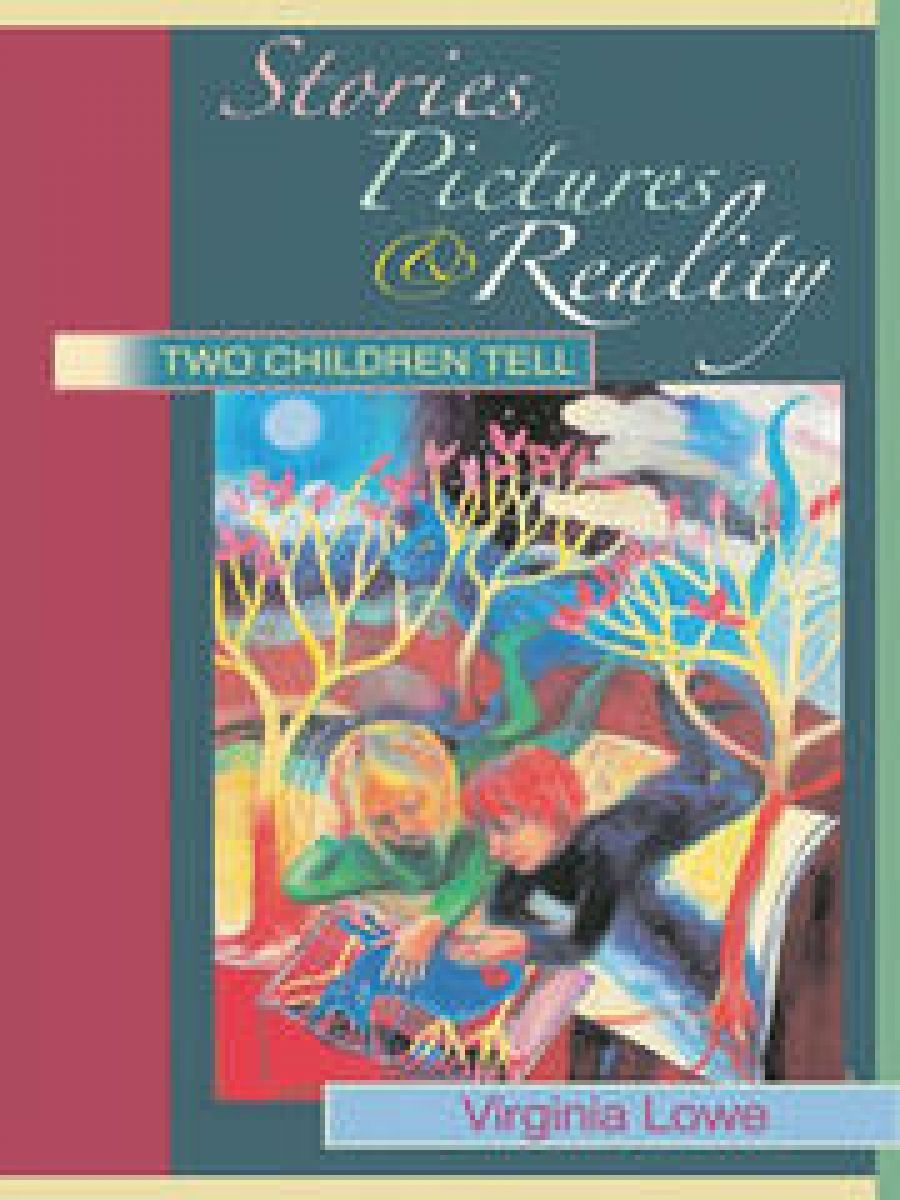
- Free Article: No
- Contents Category: Non-fiction
- Review Article: Yes
- Article Title: Déja lu
- Online Only: No
- Custom Highlight Text:
Virginia Lowe has carved an academic career in the area of ‘childist criticism’ based on the responses of very young children (particularly her own) to books. Shortly after their daughter, Rebecca, was born in 1971, the Lowes began to read to her. Virginia recorded the process in a daily journal. Three years later, when their son, Ralph, was born, she recorded his reactions as well, and continued the journal in detail for about eight years. It comprises some 6,000 pages covering almost 2,000 books and the children’s engagement with them, and it formed the basis of her PhD thesis, of which Stories, Pictures and Reality: Two Children Tell, is a reworking.
- Book 1 Title: Stories, Pictures and Reality
- Book 1 Subtitle: Two children tell
- Book 1 Biblio: Routledge, $75 pb, 188 pp
- Book 1 Readings Link: booktopia.kh4ffx.net/YgYnoe
The chapters cover such topics as how the children develop an understanding of the role of the author and illustrator, and an appreciation of wordplay, humour and irony; how they learn to interpret pictures and perspectives, and to identify with characters and their emotions. The text is supplemented by twenty-eight black-and-white illustrations from the picture books under discussion, many of which remain popular with children (and their parents) more than three decades later.
Lowe cites and makes comparisons with other parent observers who have made similar studies, but claims two points of difference: her observations began shortly after birth rather than when the child was at least two, and they include a subsequent (and male) sibling. Another unique aspect is that this is the first full-length study of an individual child’s understanding of reality, explored through Rebecca and Ralph’s reactions to the text and pictures in the books that were read to them. (Television gets only a passing mention, since the children had only limited viewing.)
What is immediately obvious is that the level of understanding and ability of very young children should never be underestimated. Ralph, at two years and nil months (2-0), showed evidence of recognising that different picture book characters had been drawn by the same artist; by 3-9 he was identifying finer details of illustrations; and at 4-0 he understood the role of the author. He listened with fascination to The Lion, the Witch and the Wardrobe at 3-1.
Lowe concedes that it is not possible to generalise from this study. Her children were exceptionally advantaged (Rebecca at 4-6 visited Beatrix Potter’s Hilltop Farm and compared the interiors with the illustrations in her books), not only materially but also in terms of the undivided attention they received from their parents, both of them librarians with a deep interest in sharing books with their children. Lowe argues, however, that her study shows ‘what children are capable of, not necessarily what is possible for the average child’.
That depends, of course, on the definition of ‘average child’, but observant parents, and those who have read Mem Fox’s Reading Magic (2001), will probably not be greatly surprised by many of Lowe’s findings. Where Fox differs from Lowe is in the manner of reading: Fox advocates reading stories aloud with vitality, lots of expression and vocal variation. Parents who lack confidence in their reading skills might take comfort from Lowe’s admission that her own reading style was undramatic, with no attempt made to assume different voices. Nor did she go in for the ‘labelling game’ or stop to quiz a child on aspects of the story, opting instead to read a book right through (including the title page) with few interruptions. Her concern was aesthetic appreciation rather than word recognition.
Given the number of experts who assure parents that early reading to their children on a regular basis will help them to read easily, it comes as a surprise to learn that this was not the case with either of the Lowe children, who were close to eight years old before they could read at their interest level. Neither spoke at a particularly early age either, another benefit claimed for regular parent–child reading, but certainly book exposure improved their vocabularies. From about 2-3, Rebecca began to quote extensively, enlivening her daily conversations with literary phrases and unusual words, something she continues to do to this day, as she writes in an interesting afterword.
The academic book, even those not as expensive as this one, has a small market, and it seems unlikely that Stories, Pictures and Reality will reach a general readership outside academic and educational circles. Even within these circles, there may be buyer resistance. Rebecca and Ralph are familiar names to many academics and scholars working in the field of Australian children’s literature, since Lowe has been publishing papers and journal articles based on her detailed study of their book behaviour since 1977. She acknowledges in the preface that sections of the book have appeared in other publications, and lists seventeen of her papers in the bibliography, but the often long chains of textual reuse that appear in almost every chapter may give many potential buyers a sense of déjà lu.


Comments powered by CComment